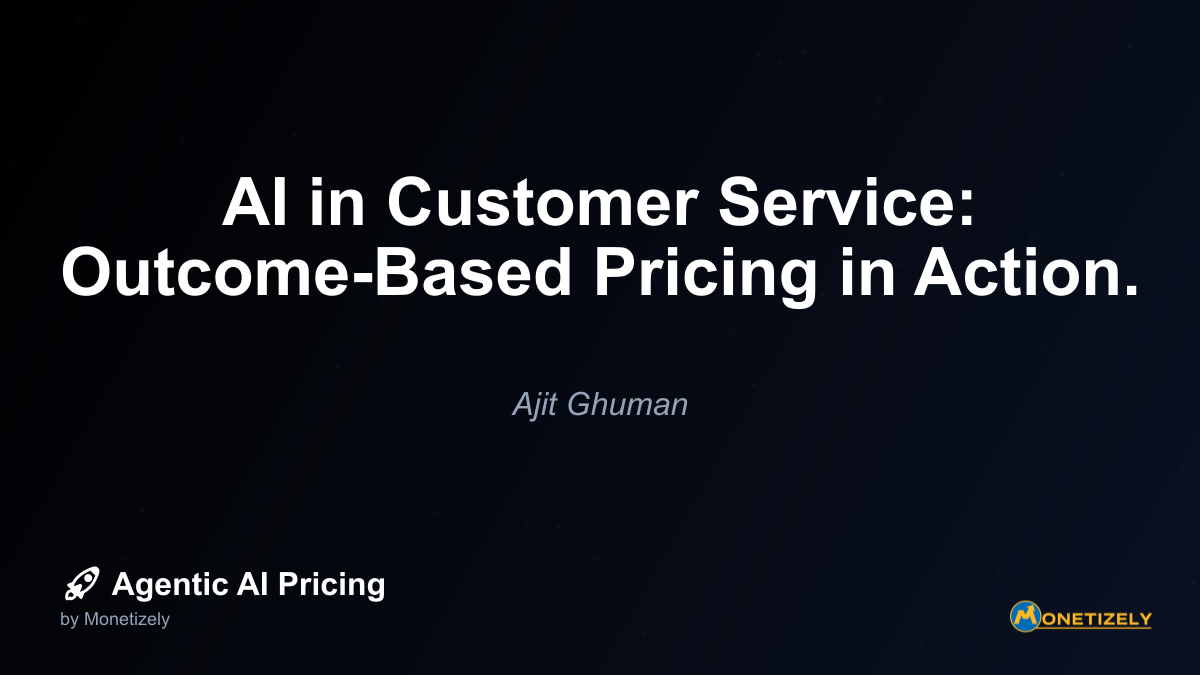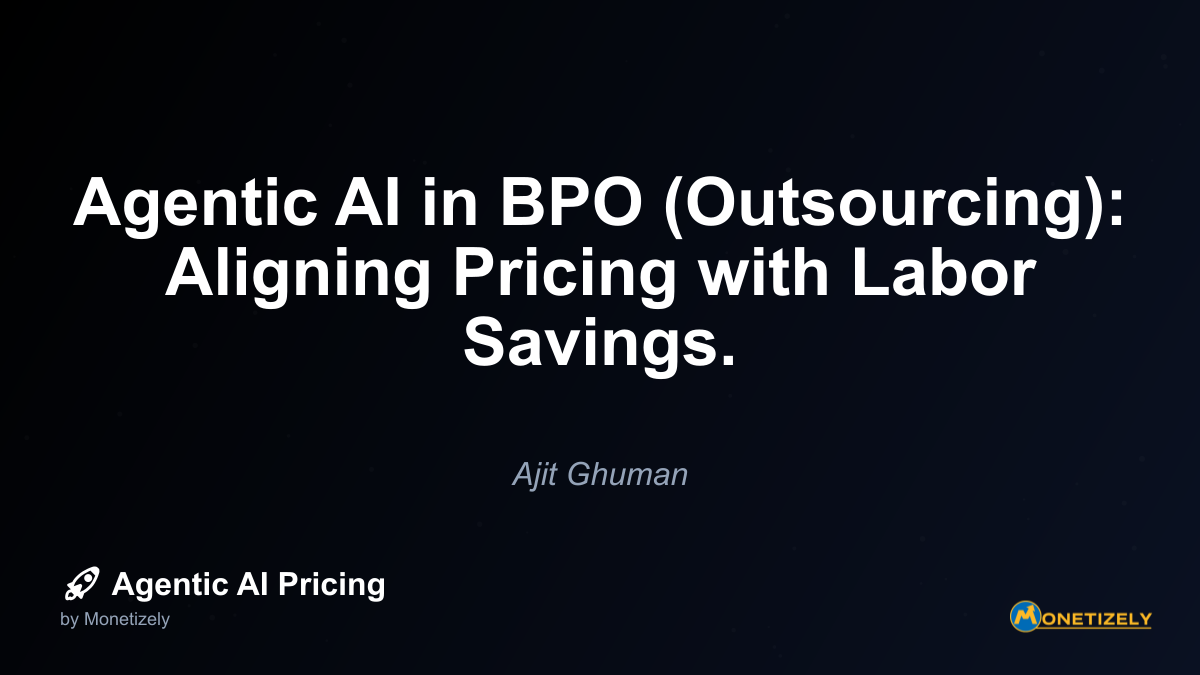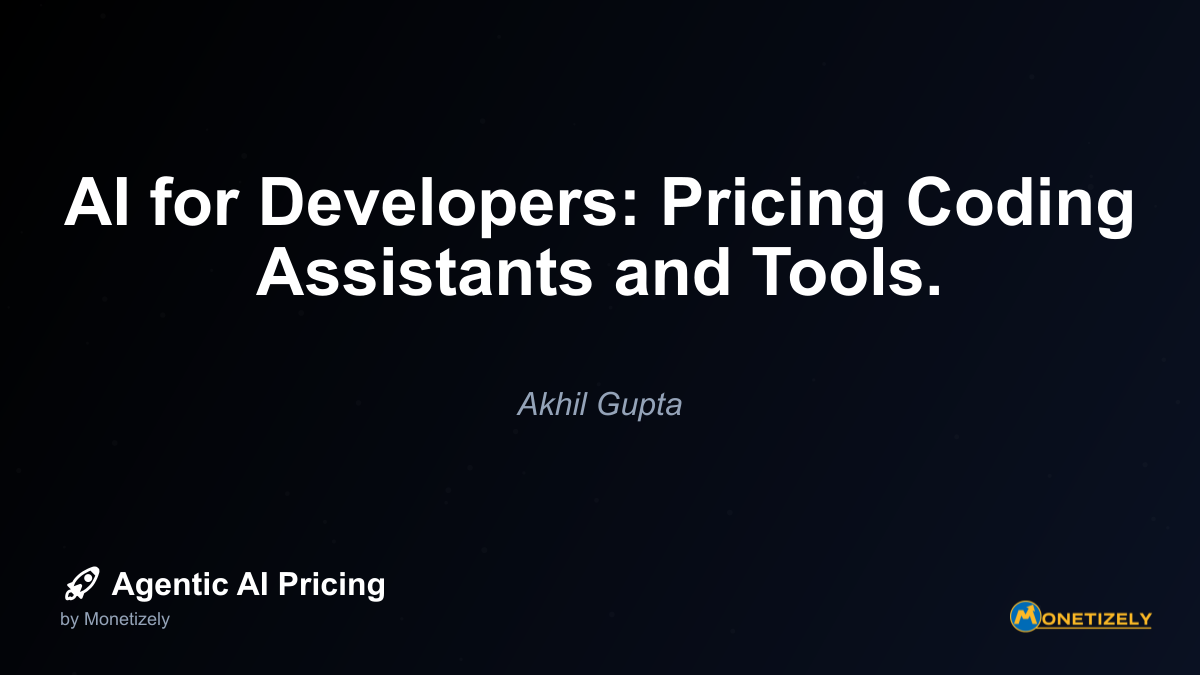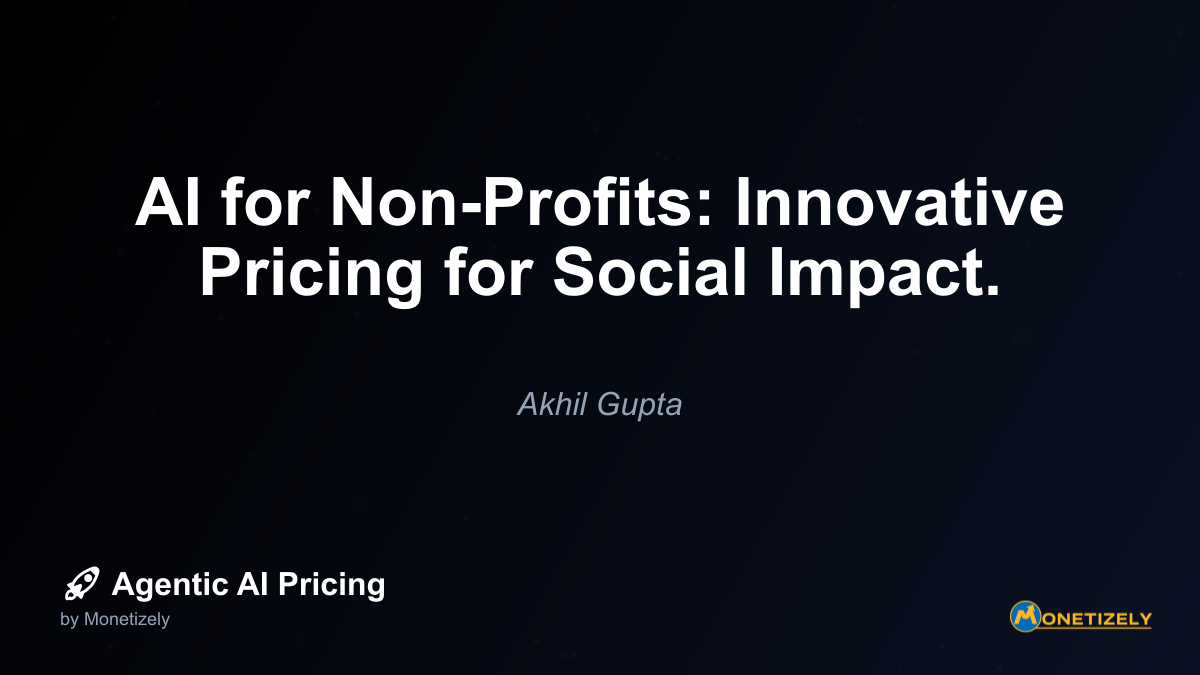· Ajit Ghuman · Industry Insights · 7 min read
AI in Customer Service: Outcome-Based Pricing in Action.
AI and SaaS Pricing Masterclass
Learn the art of strategic pricing directly from industry experts. Our comprehensive course provides frameworks and methodologies for optimizing your pricing strategy in the evolving AI landscape. Earn a professional certification that can be imported directly to your LinkedIn profile.

Zendesk, a leading customer service platform provider, has been at the forefront of implementing outcome-based pricing for its AI resolution capabilities. Their approach illustrates how this pricing model works in practice.
Zendesk’s AI Agent pricing structure includes:
Per-resolution fee: A set price for each customer inquiry successfully resolved without human intervention
Complexity tiers: Different pricing based on the complexity of issues resolved (e.g., account inquiries vs. technical troubleshooting)
Platform access fee: A baseline monthly subscription that provides access to the core platform
Volume-based discounting: Reduced per-resolution costs as usage increases
This model directly ties Zendesk’s revenue to successful outcomes—the more effective their AI becomes at resolving tickets, the more value they deliver and the more revenue they generate.
As the Chief Customer Officer at a Zendesk enterprise client explained: “The outcome-based model completely changed our calculus. We’re no longer paying for potential value but for actual results. Our cost per resolution is now 73% lower than our previous human-only approach.”
Benefits of Outcome-Based Pricing for AI Customer Service
The shift to outcome-based pricing delivers significant advantages for both providers and customers:
For Service Providers
Revenue growth aligned with value delivery: As AI systems improve and resolve more tickets, revenue increases proportionally
Incentivized continuous improvement: Providers are financially motivated to enhance their AI’s resolution capabilities
Reduced sales friction: Easier to demonstrate ROI and value proposition during the sales process
Competitive differentiation: Stands out in a market still dominated by subscription-based models
Customer success alignment: Provider success becomes directly tied to customer outcomes
For Customers
Reduced financial risk: Pay primarily for successful resolutions rather than potential capabilities
Predictable unit economics: Clear understanding of cost per resolution enables better budgeting
Easier ROI calculation: Direct comparison between AI resolution costs and human agent costs
Scalability: Costs scale proportionally with volume, avoiding the stepped increases of seat-based models
Value transparency: Clear visibility into what they’re paying for and the value received
Implementation Challenges
While outcome-based pricing offers significant benefits, implementing this model presents several challenges:
Defining “Successful Resolution”
The most fundamental challenge is establishing clear, measurable criteria for what constitutes a successfully resolved ticket. Common approaches include:
- Customer confirmation: The customer explicitly confirms their issue is resolved
- No follow-up period: No additional contact on the same issue within a defined timeframe (e.g., 24-72 hours)
- Resolution quality scoring: Automated or manual evaluation of resolution quality
- Issue categorization: Different success criteria for different types of issues
Pricing Structure Complexity
Determining appropriate pricing tiers based on resolution complexity requires careful analysis:
- Issue categorization: Developing a taxonomy of issue types and their relative complexity
- Cost analysis: Understanding the true cost of resolution across different issue types
- Value assessment: Determining the value delivered by resolving different issue types
- Competitive benchmarking: Comparing pricing against market alternatives, including human resolution
Technical Implementation
Tracking and billing based on resolutions requires robust technical infrastructure:
- Resolution tracking: Reliable systems to record and categorize successful resolutions
- Integration capabilities: Connection with existing customer service platforms
- Reporting mechanisms: Clear visibility into resolution metrics for both provider and customer
- Billing systems: Ability to calculate and process variable billing based on outcomes
Change Management
Both providers and customers must adapt to this new pricing paradigm:
- Sales team training: Educating sales teams on communicating value in an outcome-based model
- Customer education: Helping customers understand the new pricing approach and its benefits
- Internal alignment: Ensuring product, engineering, and customer success teams are aligned around resolution-focused metrics
- Financial forecasting: Adapting financial models to account for variable, outcome-based revenue
Case Study: Mid-Market E-commerce Retailer
To illustrate the impact of outcome-based pricing in AI customer service, consider the experience of a mid-market e-commerce retailer with approximately 500,000 monthly customer service interactions.
Before: Traditional Pricing Model
Prior to implementing an outcome-based AI solution, the retailer’s customer service operations included:
- 75 full-time customer service representatives
- Average cost per agent: $55,000 annually (including benefits)
- Additional technology costs: $250,000 annually
- Total annual cost: $4.375 million
- Average cost per ticket: $0.73
The retailer initially implemented a traditional subscription-based AI customer service solution:
- Annual platform fee: $350,000
- Per-seat license for supervisors: $75,000
- Total annual cost: $425,000
While this reduced some costs, the retailer found that the AI was resolving only about 30% of tickets, requiring continued heavy investment in human agents. The total blended cost per ticket declined only marginally to $0.68.
After: Outcome-Based Pricing Model
The retailer switched to an outcome-based pricing model with the following structure:
- Minimal platform fee: $50,000 annually
- Simple issue resolution: $0.20 per ticket
- Medium complexity resolution: $0.35 per ticket
- High complexity resolution: $0.50 per ticket
- Average cost per AI-resolved ticket: $0.32
With continuous improvement incentivized by the pricing model, the AI provider increased resolution rates from 30% to 65% over 18 months. This enabled the retailer to reduce their customer service team to 35 agents.
The new economics looked dramatically different:
- Human agent costs: $1.925 million
- AI resolution costs: $1.248 million
- Total annual cost: $3.223 million
- Average cost per ticket: $0.54
This represented a 26% reduction in overall customer service costs while simultaneously improving average resolution time from 4.2 hours to 1.7 hours.
The VP of Customer Experience noted: “Beyond the cost savings, the outcome-based model created perfect alignment with our AI provider. They’re constantly improving the system because it directly impacts their revenue. It’s transformed from a vendor relationship to a true partnership.”
Best Practices for Implementing Outcome-Based Pricing
Organizations considering outcome-based pricing for AI customer service should consider the following best practices:
For Service Providers
Start with a hybrid approach: Begin with a higher base fee and lower per-resolution component, gradually shifting the balance as confidence in the system grows
Establish clear success metrics: Define unambiguous criteria for what constitutes a successfully resolved ticket
Provide resolution transparency: Give customers visibility into resolution rates, categories, and costs
Create pricing tiers: Develop different pricing levels based on issue complexity and resolution value
Build continuous improvement mechanisms: Establish processes to regularly enhance resolution capabilities
For Customers
Analyze historical ticket data: Understand your ticket distribution by type, complexity, and volume to better estimate costs
Define success criteria: Work with providers to establish clear definitions of successful resolution
Start with pilot programs: Test outcome-based models with specific ticket types or customer segments
Establish baseline metrics: Document current resolution costs, times, and satisfaction scores for comparison
Prepare for organizational change: Develop plans for how customer service teams will evolve as AI resolution rates improve
The Future of Outcome-Based Pricing in Customer Service AI
As AI capabilities continue to advance, outcome-based pricing models are likely to evolve in several ways:
Expanded Success Metrics
Future pricing models will likely incorporate additional success factors beyond simple resolution:
- Customer satisfaction scores: Pricing tied to satisfaction with AI interactions
- Resolution speed: Premium pricing for faster resolutions
- First-contact resolution rates: Higher value placed on resolving issues on first contact
- Customer retention impact: Pricing connected to downstream customer retention metrics
Predictive Pricing Models
Advanced AI systems will enable more sophisticated pricing approaches:
- Issue complexity prediction: Automatic categorization of incoming tickets with appropriate pricing
- Resolution probability assessment: Dynamic pricing based on likelihood of successful resolution
- Value-based differentiation: Pricing adjusted based on customer segment and value
Integration with Broader Customer Experience
Outcome-based pricing will expand beyond isolated ticket resolution to encompass the entire customer journey:
- Cross-channel consistency: Pricing that rewards consistent resolution across multiple channels
- Proactive issue prevention: Compensation for preventing issues before they occur
- Customer lifetime value impact: Pricing tied to impact on long-term customer value
Conclusion: The Strategic Advantage of Outcome-Based Pricing
Outcome-based pricing for AI in customer service represents more than just a novel pricing approach—it’s a fundamental realignment of incentives that benefits both providers and customers. By directly connecting payment to successful outcomes, this model:
- Reduces adoption risk for organizations implementing AI customer service solutions
- Accelerates innovation as providers are financially motivated to improve resolution capabilities
- Creates true partnerships between providers and customers with aligned success metrics
- Delivers measurable ROI with clear unit economics
As AI continues to transform customer service, outcome-based pricing will likely become the dominant model, replacing traditional subscription approaches and creating a more value-aligned ecosystem.
Organizations that embrace this pricing model early—whether as providers or customers—stand to gain significant competitive advantages through improved customer experiences, reduced operational costs, and more strategic allocation of human customer service resources.
The shift to outcome-based pricing in AI customer service isn’t just a pricing innovation—it’s a reflection of a broader movement toward value-based business models where success is measured by outcomes rather than inputs. As this approach proves successful in customer service, expect to see similar models emerge across other AI applications, fundamentally changing how businesses purchase and deploy artificial intelligence solutions.
Co-Founder & CEO
Ajit is the author of Price To Scale, a top book on SaaS Pricing and is the Founder of Monetizely. Ajit has led and worked in pricing and product marketing at firms like Twilio, Narvar and Medallia. His work has been featured in Forbes and VentureBeat. Ajit regularly consults with software companies from Seed stage to post-IPO on pricing strategy. Ajit is also a highly-rated co-instructor for 'The Art of SaaS Pricing and Monetization' on Maven.
Pricing Strategy Audit
Let our experts analyze your current pricing strategy and identify opportunities for improvement. Our data-driven assessment will help you unlock untapped revenue potential and optimize your AI pricing approach.




